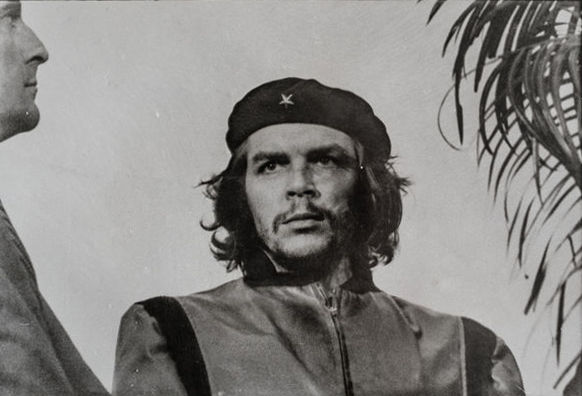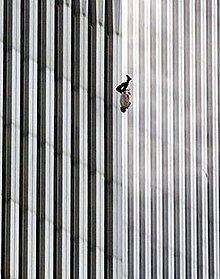What makes an image iconic?
An iconic image can be defined as a photo that represents a specific event or location, that has a strong emotional impact for people in a certain era, place or within a particular culture. The features that make an image iconic are widely debated, from ‘right place, right time’ to colour, context or props involved when taking the photo. I plan to explore the two key iconic images: ‘Guerrillero Heroico‘ by Alberto Korda and ‘The Falling Man’ taken by Richard Drew.

Alberto Korda’s image of Che Guevara (titled as ‘Guerrillero Heroico‘) is a prime example of a photo that would be considered ‘iconic’. It’s had an impressive impact across the world, initially representing the Cuban revolution and Marxism but he later became an icon for capitalism. There are many factors that drove Korda’s image to the global impression it had.
The photo was originally taken at the funeral for the victims of the La Coubre explosion in Cuba, where 75-100 individuals died as a result of a freight ship exploding (containing grenades and ammunition), which Fidel Castro charged as an ‘act of sabotage’ by the United States.
Che Guevara is reported to have driven to the scene of the explosion that day to attend to the injured, giving medical attention to crew members, armed forces personnel, and dock workers who had been hurt.
The context of the image itself shows Che’s courage and patriotic nature. However, over time, the photo has become detached from its original context, in turn diluting the photo’s substance and meaning; yet the image still works as a graphic icon. Why? Firstly, Korda’s image is a candid portrait, meaning the image portrays Che Guevara completely naturally, fully capturing the impressive force and anger in his expression. In addition to this, Korda used a low camera angle to make his subject look like a great and powerful leader.

He then cropped the image, so his subject was the only focus in the frame. It is argued that the strength of Korda’s image would have been radically reduced if he used the full-frame, as the presence of Jorge Masetti (pictured on the left) and a palm tree on the right diverts the eye away from his subject.
Had Korda kept Masetti in the frame, Guevara may not have become the global icon he is today. Besides shifting the focus of the image, the presence of Masetti holds political meaning. His code name was “Segundo Sombra“, in reference to the Argentine Gauchos (solitary, hard-riding, hard-living, freedom-loving men) who were reputed to be brave and unruly. Members of the guerrilla army stated that:
“Masetti was known simply as Segundo, or #2, though for us he was really our first and only commander.”
Federico Méndez, survivor of the Guerilla army
Therefore, if Masetti was present in the image, he may have held more political power than Guevara, in turn abolishing the intensity and force held by him in the cropped photo.
The process as to how Korda’s image become a timeless image of hope began after the murder of Che Guevara himself. After he died in Bolivia, the irish artist Jim Fitzpatrick created a stylished poster of Korda’s image (‘Viva Che’), with strong red tones that helped to seal Guevara’s iconic status as a powerful anti-establishment symbol.

Richard Drew’s photograph of ‘The falling man’ from the September 11th attacks at the World Trade center is another example of an iconic image.

It depicts a man falling from the world trade center after a terrorist attack left hundreds of civilians trapped in the burning building with two options: to stay in the building and burn to death, or to jump from the building to end their life. The image shows one of these two decisions, magnifying and amplifying the severity of this decision that many had made that same day.
The image itself encapsulates and represents all the 9/11 jumpers who chose to leap. It has become incentive for introspection for those who had watched the tragedy from afar posing the question: “Given the choice, or perhaps lack thereof, what would you have done that day?”. It had a huge impact on everyone that saw it. Drew’s image had made it to the front pages of newspapers and countless online articles. Although, it received heavy criticism, with many arguing that the image is too gruesome to have been published so publicly and to so great of an extent.
However, seeing as it is almost two decades since the event, Drew hopes that “The Falling Man” can be more widely accepted, as it is no longer a horrifying and distressing images of one man’s decision that day. but rather it has become a quiet reminder of the fate of hundreds.
